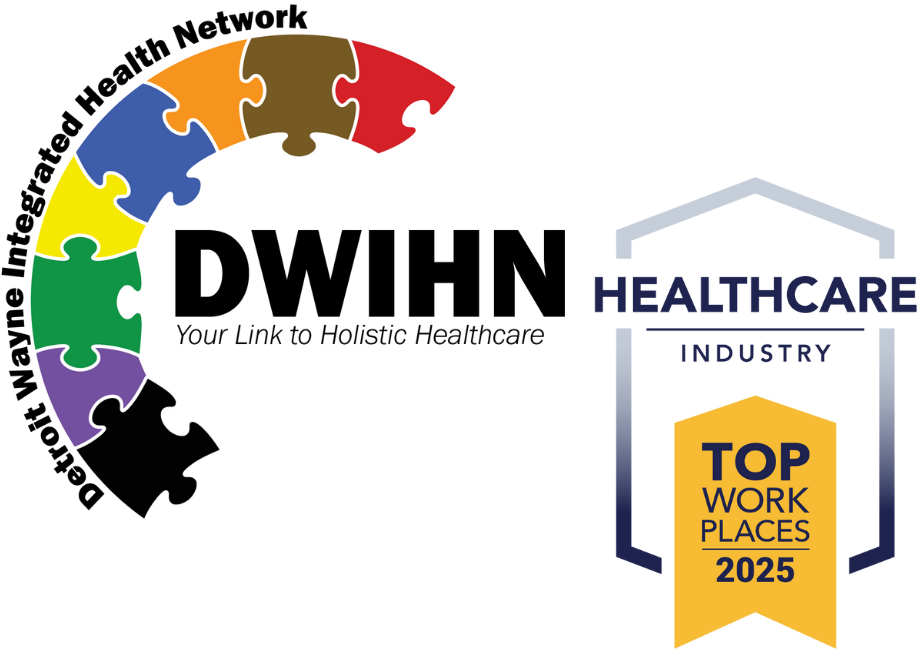What is Mental Illness?
Mental illness is a medical condition that disrupts a person's thinking, feeling, mood, ability to relate to others and daily functioning. Just as diabetes is a disorder of the pancreas, mental illnesses are medical conditions that often result in a diminished capacity for coping with the ordinary demands of life. Serious mental illnesses include major depression, schizophrenia, bipolar disorder, obsessive-compulsive disorder (OCD), panic disorder, posttraumatic stress disorder (PTSD) and borderline personality disorder. The good news about mental illness is that recovery is possible.
Mental illnesses can affect persons of any age, race, religion or income. Mental illnesses are not the result of personal weakness, lack of character or poor upbringing. Mental illnesses are treatable. Most people diagnosed with a serious mental illness can experience relief from their symptoms by actively participating in an individual treatment plan.
What is Serious Mental Illness?
Serious mental illness among people ages 18 and older is defined at the federal level as having, at any time during the past year, a diagnosable mental, behavior, or emotional disorder that causes serious functional impairment that substantially interferes with or limits one or more major life activities. Serious mental illnesses include major depression, schizophrenia, and bipolar disorder, and other mental disorders that cause serious impairment. In 2014, there were an estimated 9.8 million adults (4.1%) ages 18 and up with a serious mental illness in the past year. People with serious mental illness are more likely to be unemployed, arrested, and/or face inadequate housing compared to those without mental illness.
What are Mental Disorders?
Mental disorders involve changes in thinking, mood, and/or behavior. These disorders can affect how we relate to others and make choices. Mental disorders take many different forms, with some rooted in deep levels of anxiety, extreme changes in mood, or reduced ability to focus or behave appropriately. Others involve unwanted, intrusive thoughts and some may result in auditory and visual hallucinations or false beliefs about basic aspects of reality. Reaching a level that can be formally diagnosed often depends on a reduction in a person’s ability to function as a result of the disorder.
Anxiety disorders are the most common type of mental disorders, followed by depressive disorders. Different mental disorders are more likely to begin and occur at different stages in life and are thus more prevalent in certain age groups. Lifetime anxiety disorders generally have the earliest age of first onset, most commonly around age 6. Other disorders emerge in childhood, approximately 11% of children 4 to 17 years of age (6.4 million) have been diagnosed with attention deficit hyperactivity disorder (ADHD) as of 2011. Schizophrenia spectrum and psychotic disorders emerge later in life, usually in early adulthood.
Not all mental health issues first experienced during childhood or adolescence continue into adulthood, and not all mental health issues are first experienced before adulthood. Mental disorders can occur once, re-occur intermittently, or be more chronic in nature. Mental disorders frequently co-occur with each other and with substance use disorders. Because of this and because of variation in symptoms even within one type of disorder, individual situations and symptoms are extremely varied. DWIHN adheres to the philosophy that recovery is real.
What are Co-occurring Disorders?
The co-existence of both a mental health and a substance use disorder is referred to as co-occurring disorders.
Co-occurring disorders were previously referred to as dual diagnoses. According to SAMHSA’s 2014 National Survey on Drug Use and Health (NSDUH) (PDF | 3.4 MB), approximately 7.9 million adults in the United States had co-occurring disorders in 2014.
People with mental health disorders are more likely than people without mental health disorders to experience an alcohol or substance use disorder. Co-occurring disorders can be difficult to diagnose due to the complexity of symptoms, as both may vary in severity. In many cases, people receive treatment for one disorder while the other disorder remains untreated. This may occur because both mental and substance use disorders can have biological, psychological, and social components. Other reasons may be inadequate provider training or screening, an overlap of symptoms, or that other health issues need to be addressed first. In any case, the consequences of undiagnosed, untreated, or undertreated co-occurring disorders can lead to a higher likelihood of experiencing homelessness, incarceration, medical illnesses, suicide, or even early death.
People with co-occurring disorders are best served through integrated treatment. With integrated treatment, practitioners can address mental and substance use disorders at the same time, often lowering costs and creating better outcomes. Increasing awareness and building capacity in service systems are important in helping identify and treat co-occurring disorders. Early detection and treatment can improve treatment outcomes and the quality of life for those who need these services. Learn more about treatment for co-occurring mental and substance use disorders.
Addressing Co-occurring Disorders in Different Settings
SAMHSA offers guidance aimed at helping practitioners improve services to people with co-occurring disorders in the following social service settings:
Co-occurring Disorders in the Criminal Justice System
Many people in the criminal justice system have co-occurring disorders. Providing integrated treatment to address mental and substance use disorders can lead to positive outcomes such as reduced substance use and arrests.
Failure to effectively screen and assess inmates with co-occurring disorders is a major concern in the criminal justice system. As part of the full protocol, an effective screening process should include the following:
- Routine screening at entry points to criminal justice settings
- Use of standardized instruments that include cut-off points to determine whether a person should be referred for a follow-up assessment
- Trained staff to administer the screening instruments and refer people for assessment
- A response for incarcerated people experiencing a behavioral health crisis, such as intoxication or drug use that requires medical attention, or if an individual is experiencing suicidal thoughts
- Health care records being maintained by the agency conducting the screening
Learn about SAMHSA’s efforts to address criminal and juvenile justice and trauma and violence.
Co-occurring Disorders and Homelessness
Co-occurring disorders are common among people experiencing homelessness. This population often has a variety of issues that require services beyond behavioral health treatment, such as life skills development, employment assistance, and housing.
While treating people experiencing homeless who are suffering from co-occurring disorders through integrated care is important to recovery, few have access to it. People experiencing homelessness may be isolated or have little to no access to health and behavioral health services, and therefore their health issues may go undiagnosed or untreated. This can lead to chronic homelessness and further deterioration in physical and behavioral health, as well as social and economic functioning.
One way to improve access to integrated care for people experiencing homelessness is to implement integrated screening and assessment throughout the homeless system of care. Integrated screening determines the likelihood that people experiencing homelessness may or may not have co-occurring disorders or whether co-occurring disorders are influencing their presenting signs, symptoms, or behaviors. Assessment is an ongoing process of collecting and organizing clinical information and interpreting the information on the basis of diagnostic criteria and professional judgment.
Learn about SAMHSA’s efforts to address homelessness and housing for people with mental and/or substance use disorders.
Co-occurring Disorders and Primary Care
People who receive primary care often may have multiple health issues, including co-occurring disorders. Integrating behavioral and primary care is especially important to meeting their needs.
People with co-occurring disorders may seek primary care services first before seeking behavioral health services. As a result, primary care practitioners have unique opportunities to identify people with co-occurring disorders through screening. Screening for co-occurring disorders in primary care settings can assist practitioners in recognizing and addressing conditions early. Screening also can serve as a baseline to measure clinical progress.
A variety of screening and assessment tools are available for primary care practitioners. These screening and assessment tools can help determine if the need for further assessment is necessary, provide background on a client’s substance use and mental health disorders and the severity, and estimate how effective they respond to interventions.
Learn about SAMHSA’s efforts to promote health care and health systems integration.
Co-occurring Disorders among Veterans and the Military Community
Co-occurring disorders, such as post-traumatic stress disorder (PTSD) and substance use, is prevalent among veterans and the military community. According to the Veterans Affairs Department (VA), approximately one-third of veterans seeking treatment for substance use disorders also met the criteria for PTSD.
Veterans and service members benefit from integrated care for mental and substance use disorders. However, some veterans may not seek medical treatment for one of many reasons, including a fear of being treated differently.
To promote wellness among veterans, service members, and their families, practitioners are encouraged to collaborate with other organizations to develop a training plan in effective integrated care techniques. The following organizations provide guidance on treating PTSD and substance use disorders:
Learn about SAMHSA’s efforts to address the behavioral health needs of veterans and military families.
Practitioner Competencies for Treating Co-occurring Disorders
States working to improve treatment for people with co-occurring disorders have established practitioner competencies that define roles and create a common framework for working collaboratively across social service systems. These competencies have been developed as guidelines or checklists for clinical supervisors to use when assessing practitioner performance in providing integrated services. The competencies can be incorporated into existing job descriptions, training plans, supervision meetings, personal evaluation, and credentialing and licensure.
Learn more about SAMHSA’s efforts to grow the nation’s behavioral health workforce.

